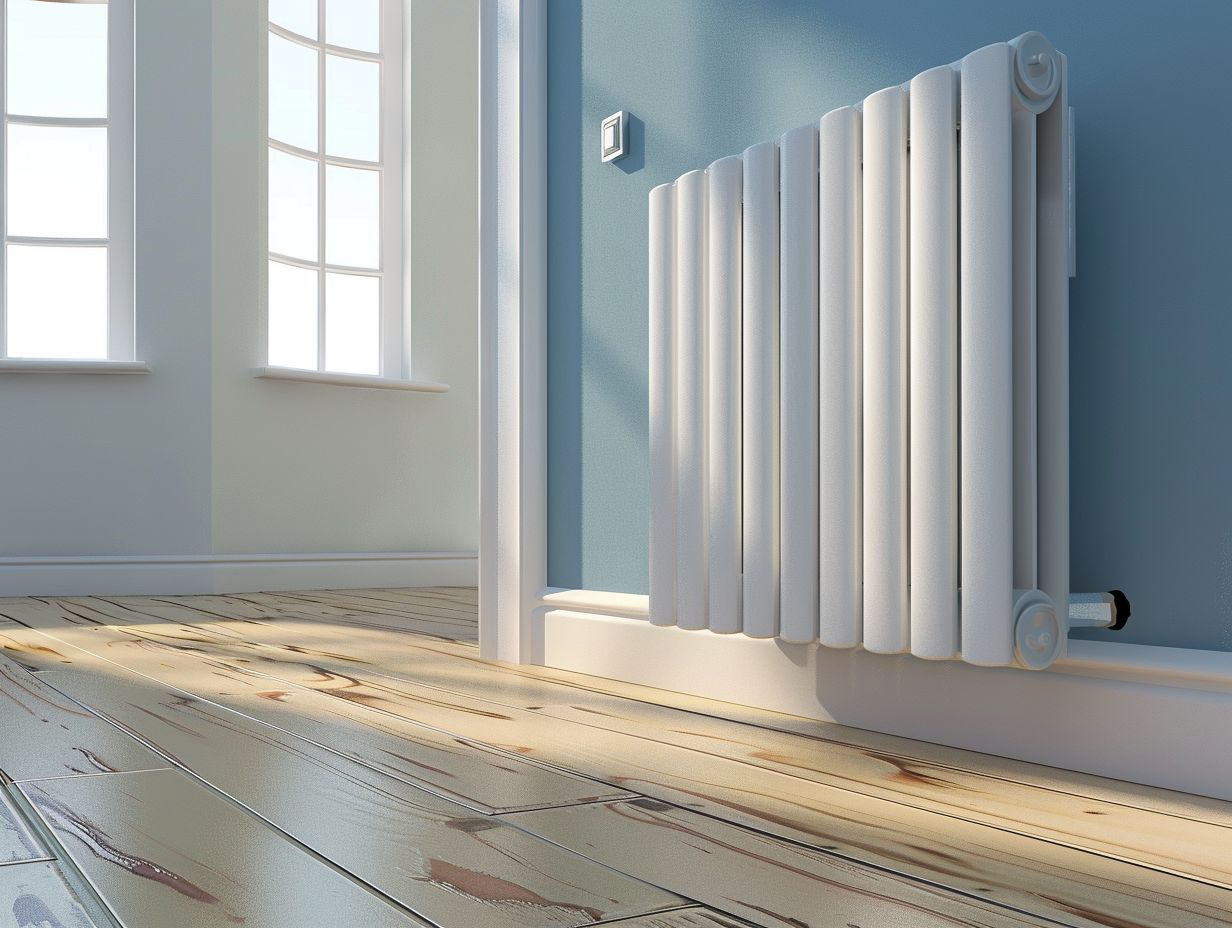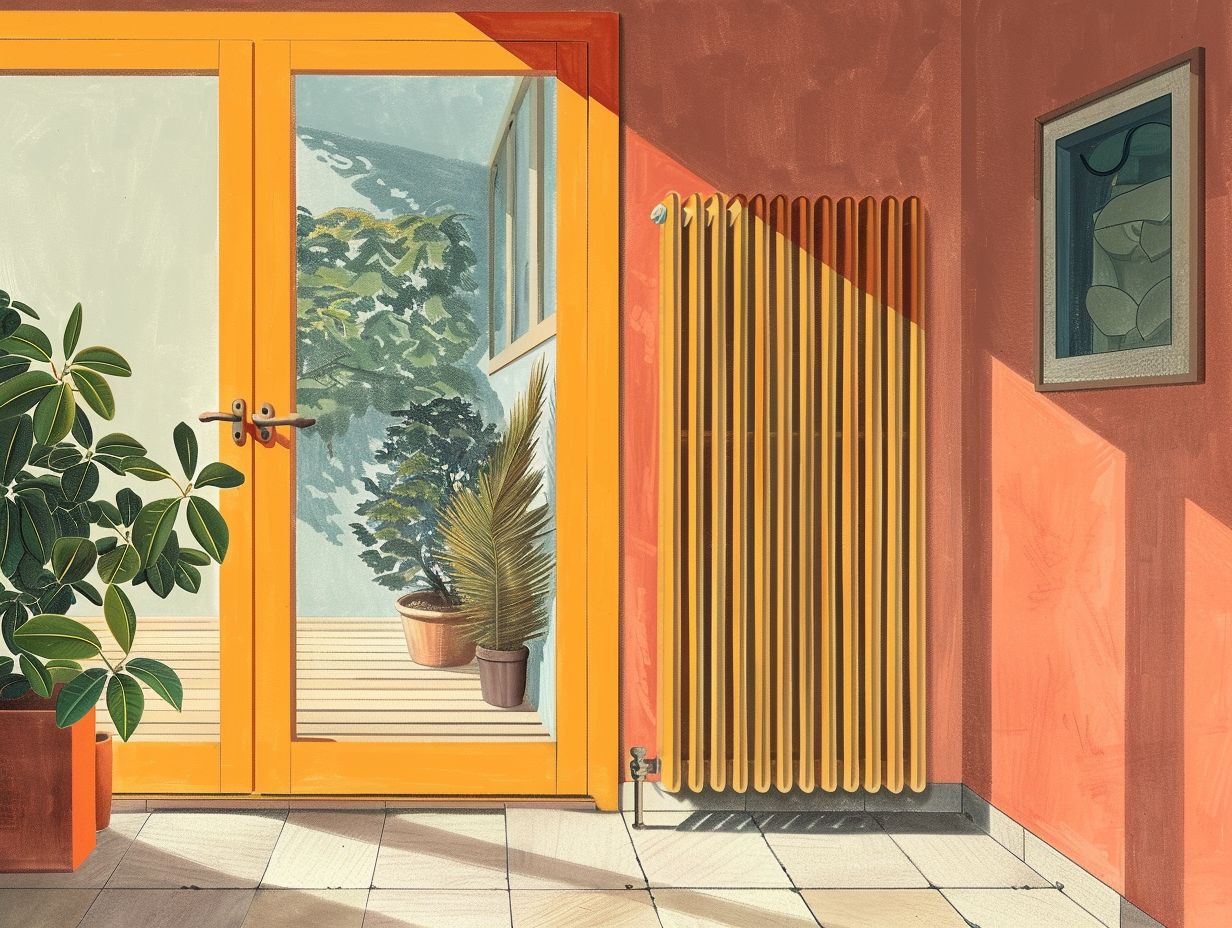If you are considering installing a new heating system in your space, you may be weighing the options between vertical and horizontal radiators. This article aims to elucidate the benefits associated with both choices to empower you to make a well-informed decision.
We will delve into the efficiency and space-saving benefits of vertical heating, alongside the advantages of uniform heat distribution and aesthetic appeal offered by horizontal heating. Additionally, factors such as room layout, dimensions, cost implications, and installation requirements will be examined to guide you in selecting the most suitable heating solution for your space.
Key Takeaways:

- Vertical heating offers efficient and space-saving advantages, making it a great option for smaller rooms and apartments.
- Horizontal heating provides uniform heat distribution and adds to the aesthetics of a space, making it a popular choice for larger rooms and commercial buildings.
- When choosing between vertical and horizontal heating, consider factors such as room layout and size, as well as cost and installation considerations, to determine the best option for your space.
Explanation of Vertical and Horizontal Heating
When explaining vertical and horizontal heating, it is important to understand the different ways radiators can be positioned to effectively warm a room. Vertical radiators are mounted vertically on walls, while horizontal radiators are situated horizontally beneath windows or at lower levels on walls to provide heat.
Vertical radiators are ideal for spaces with limited wall space, as they can be placed in narrow, unused areas. Conversely, horizontal radiators are commonly selected for their practicality in rooms with low windows, where traditional radiators may obstruct the view or window treatments.
The heat distribution varies between the two types of radiators. Vertical radiators typically distribute heat upwards to circulate around the room efficiently, while horizontal radiators emit heat outward, ensuring a consistent temperature at ground level.
In terms of room design, vertical radiators can introduce a sleek, modern element, visually extending the space of the room. On the other hand, horizontal radiators seamlessly blend into the lower sections of walls, maintaining a cohesive aesthetic. Both options offer effective heating solutions while enhancing the overall aesthetics of the space.
Benefits of Vertical Heating
Vertical heating offers you numerous benefits, such as enhanced heat output resulting from the taller design, innovative radiator designs customised for vertical installations, and the ability to accurately determine BTU requirements using BTU calculators for efficient installation.
Vertical radiators are available in various styles and materials, providing homeowners with the flexibility to select a design that complements their interior decor. These unique vertical radiator designs not only serve a functional purpose but also add a touch of elegance to the room.
When contemplating installation, vertical radiators prove to be space-efficient, making them well-suited for rooms with limited wall space. The vertical orientation facilitates easier integration within a room layout, offering flexibility in positioning for optimal heat distribution.
Efficiency and Space-Saving Advantages
Vertical radiators provide you with efficiency and space-saving advantages by leveraging vertical proportions to distribute heat effectively. They boast a sleek and modern design that not only enhances the aesthetics of your room but also optimises wall space.
Not only are these radiators practical, but they also serve as stylish focal points in any room. The vertical orientation makes them easy to incorporate into various interior design styles, whether you lean towards a contemporary, minimalist look or a more traditional aesthetic.
Vertical radiators come in a variety of finishes, ranging from classic white to bold metallics, enabling you to customise them to seamlessly match your room decor. Their slim profile makes them perfect for rooms where space is limited, such as hallways or small living areas.
Benefits of Horizontal Heating

Horizontal heating offers you unique benefits such as uniform heat distribution across the room, ensuring consistent room warmth and comfort. Along with this, you can choose from a variety of stylish horizontal radiator designs that complement different interior styles.
The even distribution of heat provided by horizontal radiators helps eliminate cold spots or drafts in a room, creating a cosy and inviting atmosphere.
The sleek and modern aesthetic of horizontal radiator styles adds a touch of sophistication to any interior design scheme, serving as both a functional heating element and a decorative focal point.
With horizontal radiators, not only do you get the practical advantage of efficient room heating, but you also enhance the overall visual appeal of your living space.
Uniform Heat Distribution and Aesthetics
Horizontal radiators excel in providing you with uniform heat distribution throughout the room. This ensures that you experience consistent warmth and comfort while also adding to the aesthetics of your space through their practical design and functionality.
The even heat distribution that horizontal radiators offer serves to minimise cold spots, creating a cosy environment in which you can relax and unwind. These radiators are specifically crafted to seamlessly complement various interior styles, functioning as both a practical heating solution and a stylish focal point in your room.
Their low-profile design is well-suited for spaces with limited wall space, allowing for optimal utilisation of the available area while delivering dependable and efficient heat. Horizontal radiators are not only functional but also contribute to a visually appealing ambiance, making them a favoured choice for both modern and traditional room designs.
Factors to Consider When Choosing Between Vertical and Horizontal Heating
When you are faced with the decision between vertical and horizontal heating options, several factors come into play.
Room layout, practical design considerations, interior design preferences, BTU requirements, existing heating systems, and overall heating solutions all play a crucial role in helping you make the right choice.
The layout of the room can significantly impact your decision. Some spaces may be better suited for vertical radiators, while others may benefit more from horizontal ones.
Ensuring practical design integration means selecting a heating option that seamlessly fits into the aesthetics of the room. Considering the BTU requirements is essential to guarantee efficient heating.
Additionally, it is important to evaluate how the new heating system will work alongside any existing systems in your home to create a cohesive heating solution that meets your needs effectively.
Room Layout and Size
When deciding between vertical and horizontal heating options, your choice will be greatly influenced by the layout and size of the room. Factors such as radiator shape, design, room decor, and interior design will all play a crucial role in determining the most suitable heating solution.
In smaller rooms with limited wall space, vertical radiators may be the more space-efficient and aesthetically pleasing option. Conversely, larger rooms with expansive walls might benefit from the broader heating spread provided by horizontal radiators.
It is imperative to ensure that the selected heating option aligns harmoniously with the overall design scheme of the room, seamlessly blending in or making a bold statement as a focal point. By incorporating heating elements that complement the decor, you can enhance the room’s ambiance, creating a cohesive and visually appealing living space.
Cost and Installation Considerations

When choosing between vertical and horizontal heating systems, it is important to consider cost and installation factors. BTU requirements, upfront costs, installation complexity, radiator styles, and overall heating solutions all play a role in the decision-making process.
Vertical heating systems are often preferred in rooms with limited wall space, as they occupy less floor space compared to horizontal radiators. Meanwhile, horizontal heating systems can offer more uniform heat distribution throughout the room.
The BTU requirements are crucial in determining the appropriate size and capacity of the heating system for optimal performance. By evaluating cost-effectiveness and installation convenience, homeowners can make well-informed decisions that are in line with their specific heating requirements and financial constraints.
Choosing the Right Heating Option for Your Space
When selecting the right heating option for your space, it is important to consider the benefits of vertical radiators, the impact of modern design choices, creating a style statement with radiator styles, and ensuring that the heating solution aligns with both functional and aesthetic requirements.
Vertical radiators provide a space-saving solution for rooms where traditional radiators may not fit optimally. Their tall and slim design allows you to maximise wall space while still receiving efficient heating.
Modern vertical radiators come in a variety of finishes and colours, giving you the flexibility to seamlessly match them with your existing decor or make them a focal point in the room.
By choosing a radiator that not only fulfils your heating needs but also enhances the overall aesthetic of the space, you can achieve both comfort and style in your home.
Frequently Asked Questions
What is the difference between vertical heating and horizontal heating?
Vertical heating and horizontal heating refer to the way radiators are installed or positioned in a room. Vertical heating involves installing radiators in a vertical position, while horizontal heating involves installing radiators in a horizontal position.
Which is more efficient, vertical or horizontal heating?

Both vertical and horizontal heating can be equally efficient, as long as the radiators are properly sized for the room and the heating system is in good working condition. However, vertical heating may be more efficient in rooms with high ceilings, while horizontal heating may be more efficient in rooms with lower ceilings.
What are the benefits of vertical heating?
Some potential benefits of vertical heating include better heat distribution, especially in rooms with high ceilings, and more wall space for furniture placement since the radiators are installed vertically. Vertical heating may also be more aesthetically pleasing in some modern interior designs.
What are the benefits of horizontal heating?
Horizontal heating can provide more consistent and even heating throughout a room, as the heat rises and spreads horizontally. It can also be more compact and less obtrusive compared to vertical heating, making it a good choice for smaller spaces or rooms with lower ceilings.
Which type of heating is easier to install?
Generally, horizontal heating may be easier to install since it requires less drilling and mounting compared to vertical heating. However, the installation process may ultimately depend on the specific layout and design of the room.
Can vertical and horizontal heating be used together?
Yes, it is possible to use a combination of vertical and horizontal heating in a single space. This can provide more versatility and customisation in terms of heat distribution and room layout, but it is important to consult with a professional to ensure proper installation and compatibility with the heating system.

